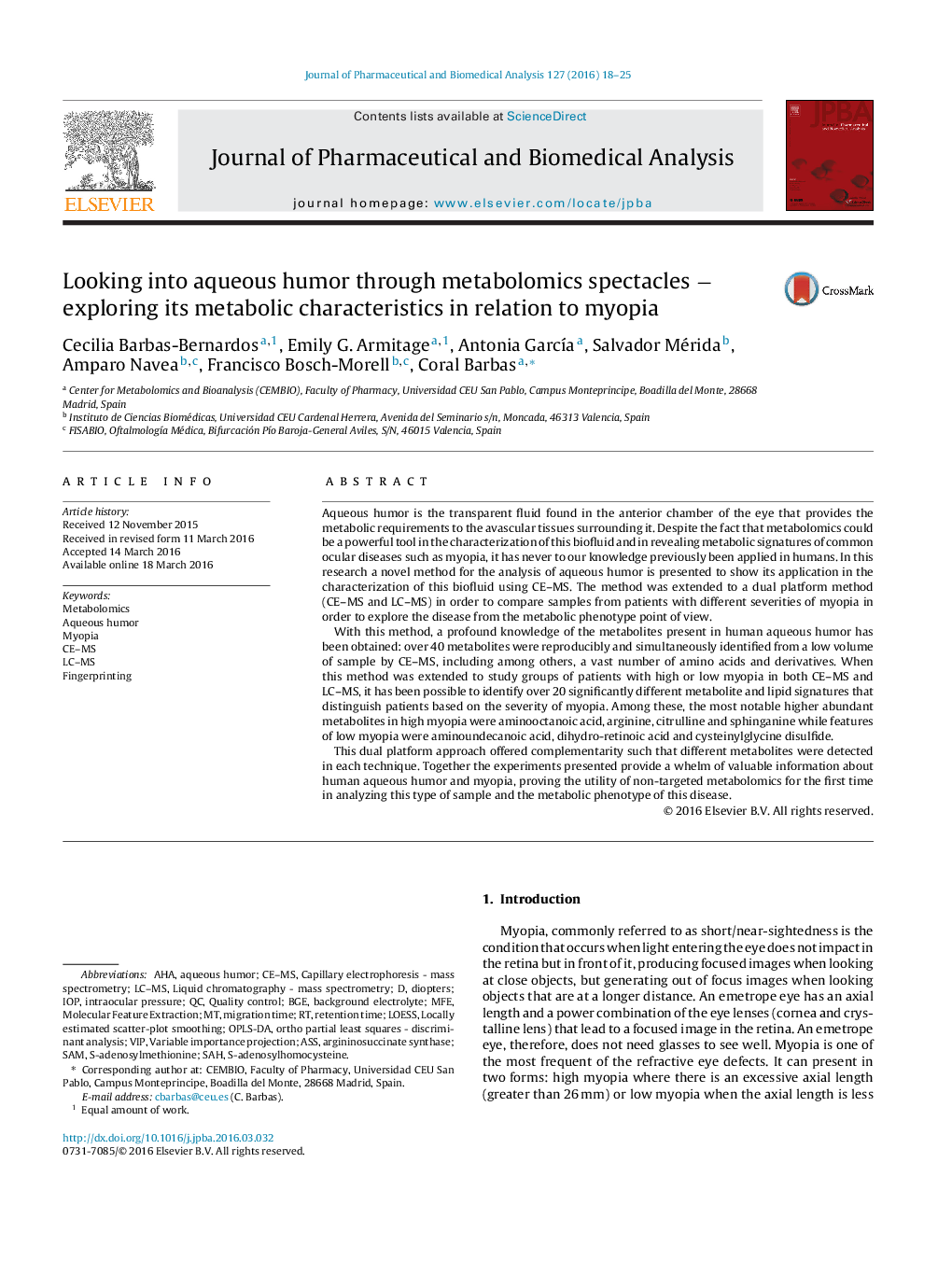| Article ID | Journal | Published Year | Pages | File Type |
|---|---|---|---|---|
| 1220909 | Journal of Pharmaceutical and Biomedical Analysis | 2016 | 8 Pages |
•Metabolomics has been applied for the first time in characterizing human aqueous humor.•Significant metabolic differences in patients with high and low myopia have been elucidated in a non- targeted metabolomic study.•CE–MS and LC–MS have proved their utility in metabolomics of aqueous humor.
Aqueous humor is the transparent fluid found in the anterior chamber of the eye that provides the metabolic requirements to the avascular tissues surrounding it. Despite the fact that metabolomics could be a powerful tool in the characterization of this biofluid and in revealing metabolic signatures of common ocular diseases such as myopia, it has never to our knowledge previously been applied in humans. In this research a novel method for the analysis of aqueous humor is presented to show its application in the characterization of this biofluid using CE–MS. The method was extended to a dual platform method (CE–MS and LC–MS) in order to compare samples from patients with different severities of myopia in order to explore the disease from the metabolic phenotype point of view.With this method, a profound knowledge of the metabolites present in human aqueous humor has been obtained: over 40 metabolites were reproducibly and simultaneously identified from a low volume of sample by CE–MS, including among others, a vast number of amino acids and derivatives. When this method was extended to study groups of patients with high or low myopia in both CE–MS and LC–MS, it has been possible to identify over 20 significantly different metabolite and lipid signatures that distinguish patients based on the severity of myopia. Among these, the most notable higher abundant metabolites in high myopia were aminooctanoic acid, arginine, citrulline and sphinganine while features of low myopia were aminoundecanoic acid, dihydro-retinoic acid and cysteinylglycine disulfide.This dual platform approach offered complementarity such that different metabolites were detected in each technique. Together the experiments presented provide a whelm of valuable information about human aqueous humor and myopia, proving the utility of non-targeted metabolomics for the first time in analyzing this type of sample and the metabolic phenotype of this disease.
